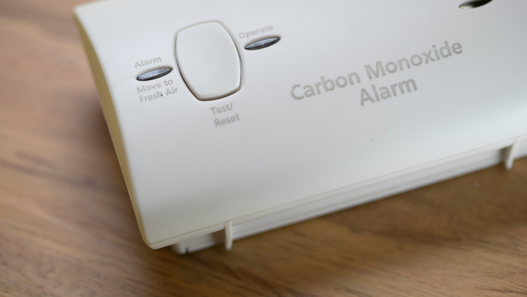5 Things You Should Know about Carbon Monoxide
January 6, 2023For many, the New Year often inspires us to begin tackling our around-the-home to-do list. But before you get too far into organizing and spring cleaning, take a moment to learn about why getting a carbon monoxide detector is a must-do on any parent’s list.
- Carbon monoxide (CO) is a gas that you can’t see, taste, or smell. It’s often created when appliances that run on gas, like heaters, grills, generators, clothes dryers and vehicles don’t use all their fuel.
- Children are more susceptible to carbon monoxide poisoning, so they often have more severe symptoms more quickly than adults do. Symptoms of CO poisoning can include headaches, sleepiness and nausea. If not addressed, CO poisoning can even lead to death.
- Only use generators and grills outside in a well ventilated area, and keep them away from windows and doors. Keeping these appliances in the open air can help disperse carbon monoxide so that it doesn’t enter the home. Don’t use your kitchen stove to heat your home because this can cause a buildup of CO. If you need to heat up your car, park outside before turning it on; letting a car run in the garage can cause CO to build up.
- Carbon monoxide detectors are widely available at home improvement stores, hardware stores and online. Place one on each level of your home, especially near bedrooms. Test your CO alarms each month and replace them according to the manufacturer’s directions.
- If your carbon monoxide detector ever alarms, get everyone in the household outside into fresh air. Once everyone is outside, call 911 and don’t return inside the home until emergency responders tell you it’s safe to do so.

A carbon monoxide alarm is a small device that is plugged into an outlet and emits a loud alarm if it detects carbon monoxide in the home.
Installing a carbon monoxide detector in the home takes only a couple minutes to do, but can provide a lifetime of safety and peace of mind for your family. For more information about carbon monoxide safety and for printable CO poisoning prevention tips, visit the Safe Kids Worldwide website.
About the Author
Kristina Pasma, BSN, RN, CPSI, is a trauma nurse liaison at Valley Children's Healthcare. She is also the Safe Kids Central California Coalition Coordinator and is passionate about educating children and their families about injury prevention at home and in the community.